Abstract
A procedure to estimate the extent of K recirculation in plants is proposed. This is based on the ratio of the upward fluxes of K to Ca in the xylem sap from root to shoot with the ratio of K to Ca accumulation in plant tops.
In a preliminary investigation the factors influencing the K to Ca ratio in the xylem sap were considered. Tomato plants were grown at three levels of K nutrition and harvested at different times during the 24-hour day period. It was shown that the K to Ca ratio in xylem sap changed dramatically depending on the time of sap collection after decapitation, the values falling from over 2 to less than unity over the 4-hour period of collection. Diurnal effects on exudation were less marked but also of significance. The level of K nutrition was of little importance. It is suggested that a representative xylem sap from tomato plants can best be obtained from samples taken between 15 and 60 minutes after decapitation.
In a second experiment K recirculation was estimated. At nine harvesting stages over a 24-hour period the K to Ca ratio in the xylem sap was invariably higher than the K to Ca ratio of accumulation in the tops over the same period. From this information it was calculated that about 20% of the upward flux of K in the xylem stream resulted from recirculated K.
Full text
PDF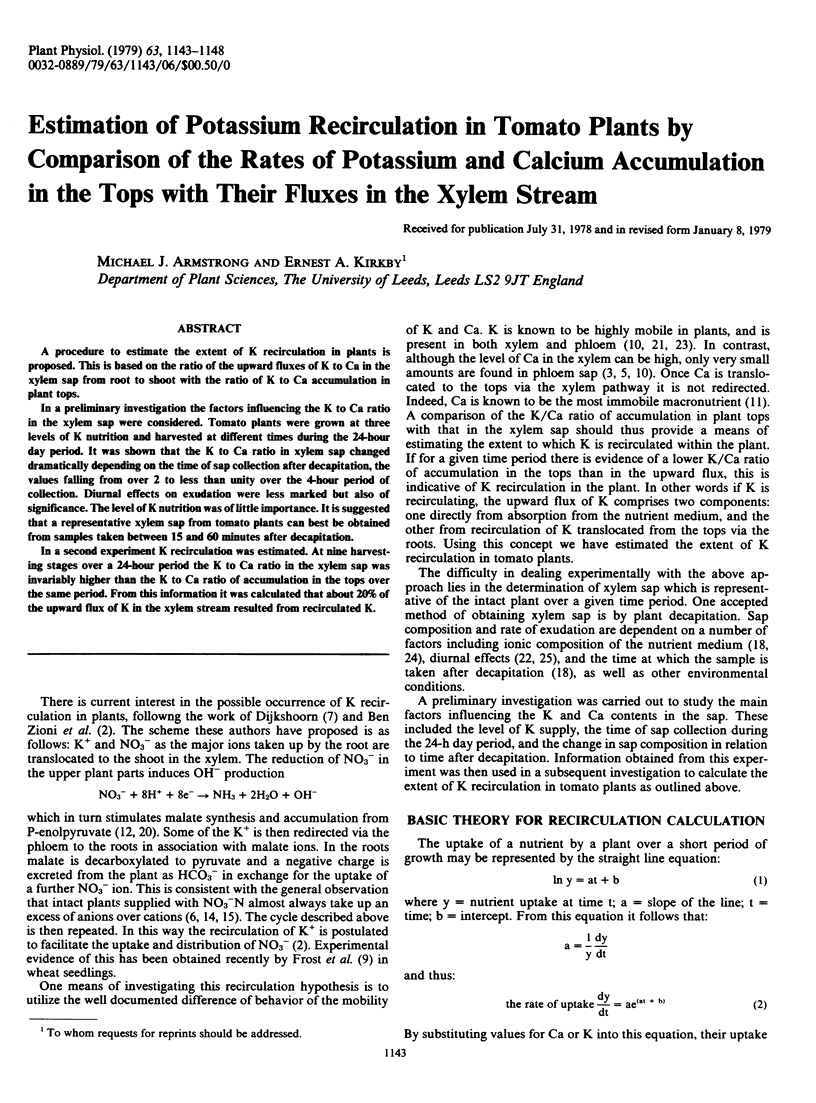
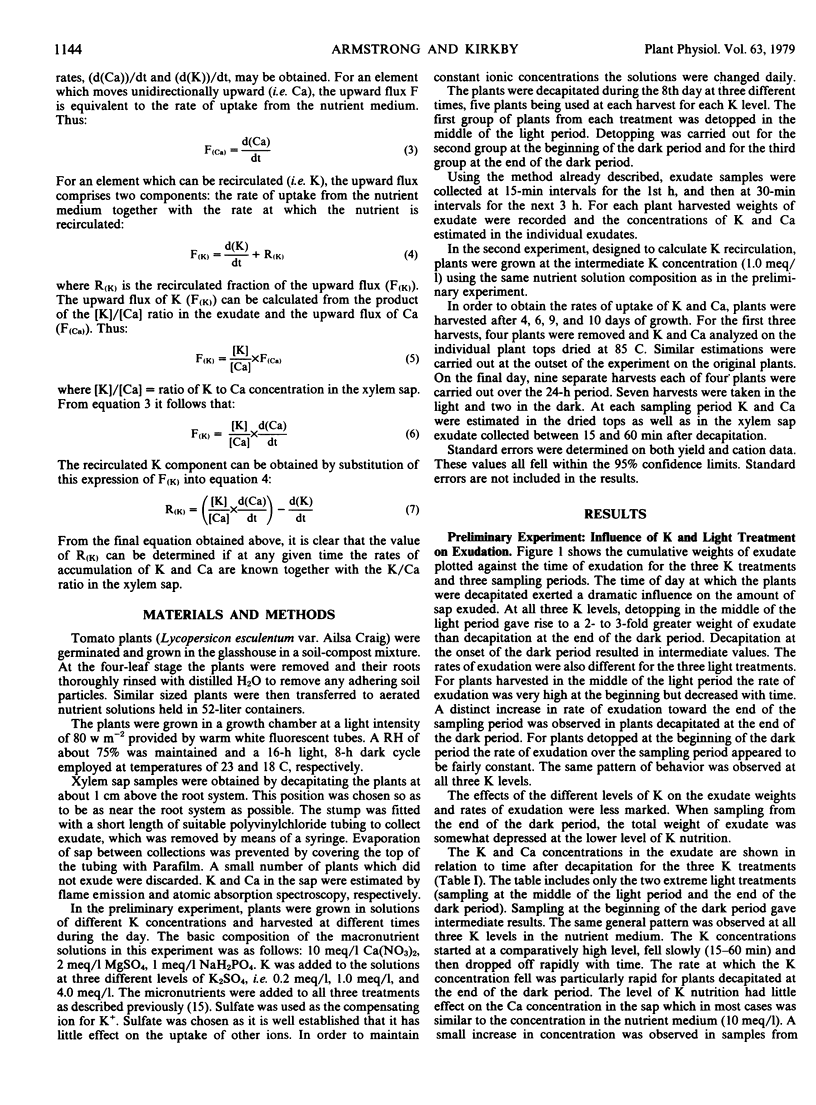
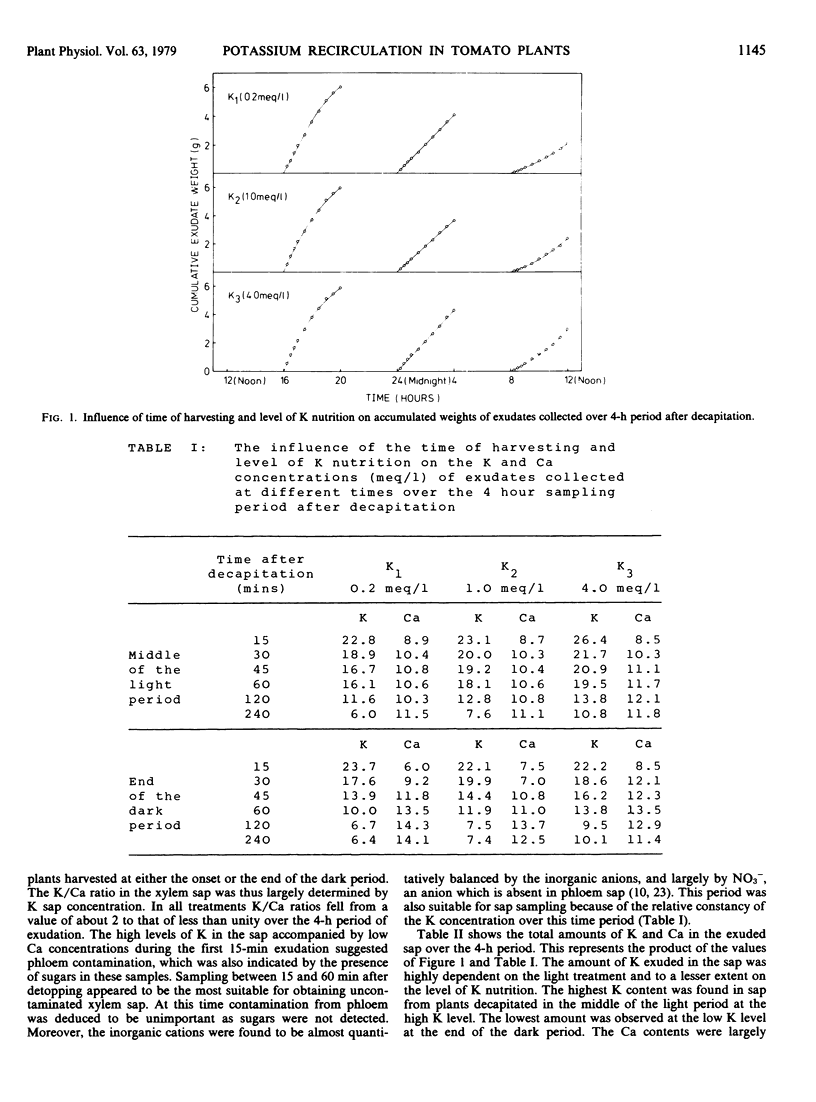
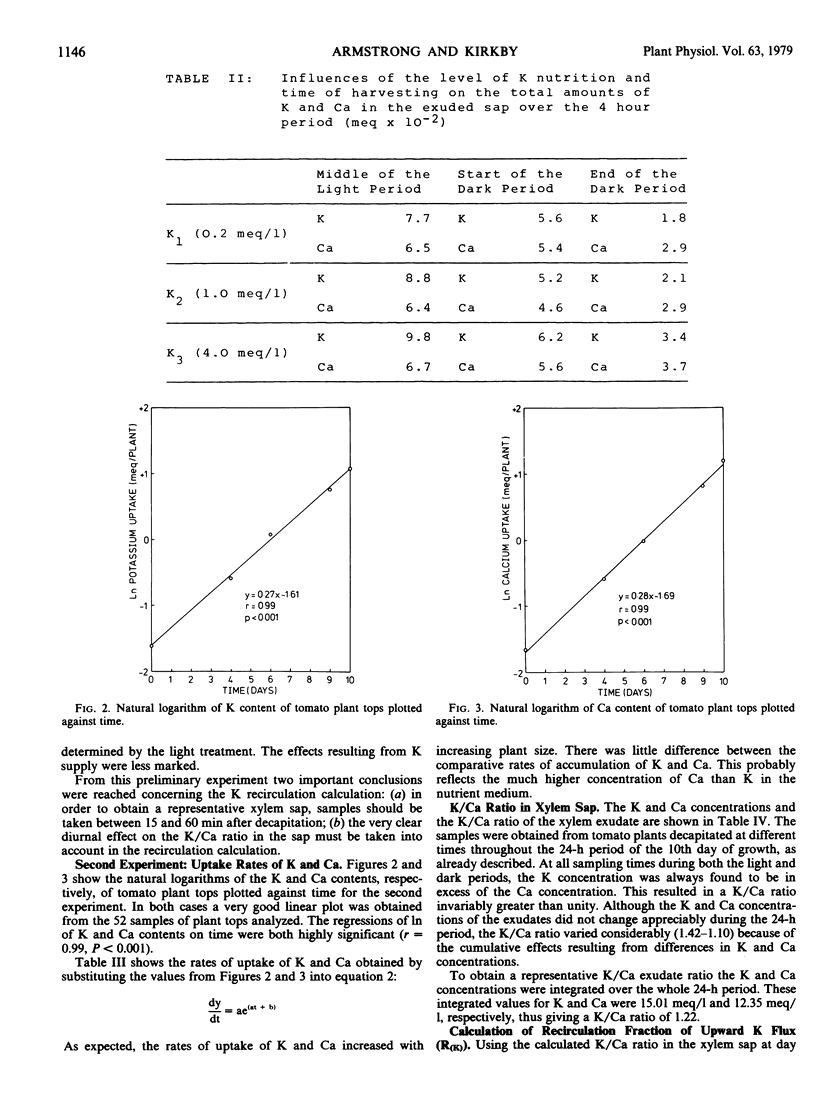
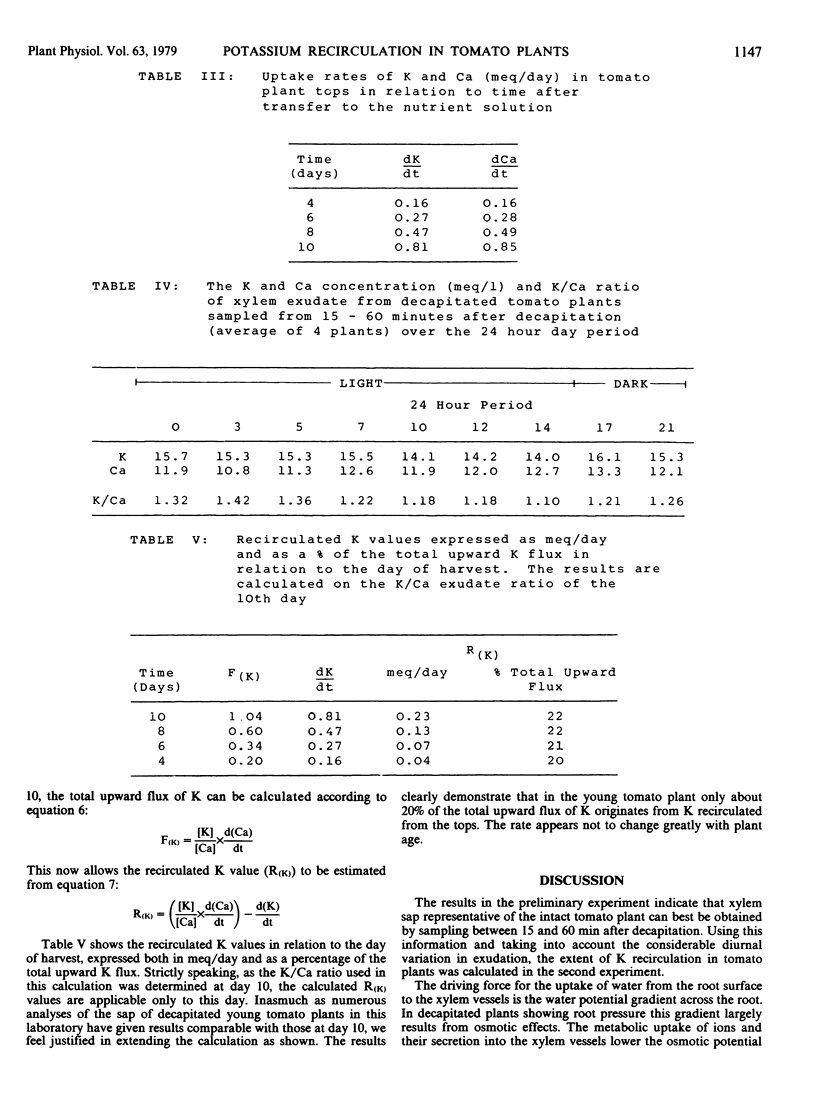
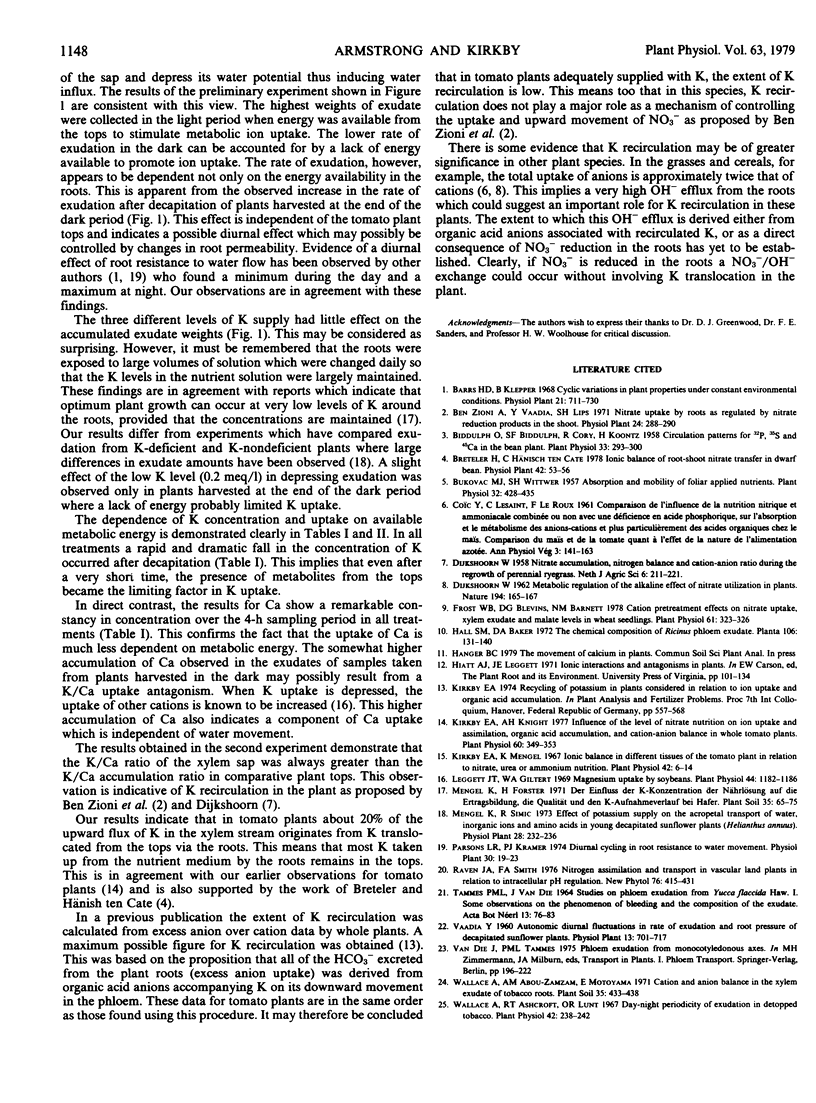
Selected References
These references are in PubMed. This may not be the complete list of references from this article.
- Biddulph O., Biddulph S., Cory R., Koontz H. Circulation Patterns for Phosphorus, Sulfur and Calcium in the Bean Plant. Plant Physiol. 1958 Jul;33(4):293–300. doi: 10.1104/pp.33.4.293. [DOI] [PMC free article] [PubMed] [Google Scholar]
- Bukovac M. J., Wittwer S. H. Absorption and Mobility of Foliar Applied Nutrients. Plant Physiol. 1957 Sep;32(5):428–435. doi: 10.1104/pp.32.5.428. [DOI] [PMC free article] [PubMed] [Google Scholar]
- Frost W. B., Blevins D. G., Barnett N. M. Cation pretreatment effects on nitrate uptake, xylem exudate, and malate levels in wheat seedlings. Plant Physiol. 1978 Mar;61(3):323–326. doi: 10.1104/pp.61.3.323. [DOI] [PMC free article] [PubMed] [Google Scholar]
- Kirkby E. A., Knight A. H. Influence of the level of nitrate nutrition on ion uptake and assimilation, organic Acid accumulation, and cation-anion balance in whole tomato plants. Plant Physiol. 1977 Sep;60(3):349–353. doi: 10.1104/pp.60.3.349. [DOI] [PMC free article] [PubMed] [Google Scholar]
- Kirkby E. A., Mengel K. Ionic balance in different tissues of the tomato plant in relation to nitrate, urea, or ammonium nutrition. Plant Physiol. 1967 Jan;42(1):6–14. doi: 10.1104/pp.42.1.6. [DOI] [PMC free article] [PubMed] [Google Scholar]
- Leggett J. E., Gilbert W. A. Magnesium uptake by soybeans. Plant Physiol. 1969 Aug;44(8):1182–1186. doi: 10.1104/pp.44.8.1182. [DOI] [PMC free article] [PubMed] [Google Scholar]
- Wallace A., Ashcroft R. T., Lunt O. R. Day-night periodicity of exudation in detopped tobacco. Plant Physiol. 1967 Feb;42(2):238–242. doi: 10.1104/pp.42.2.238. [DOI] [PMC free article] [PubMed] [Google Scholar]


